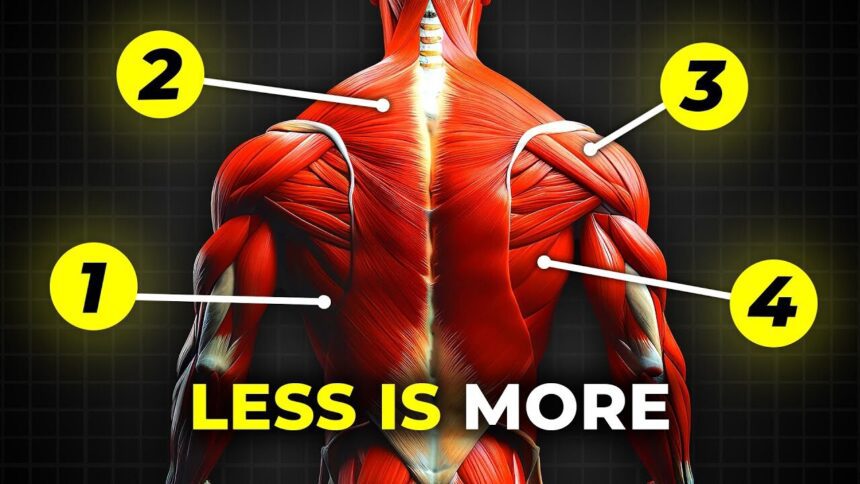In the realm of fitness, few pursuits are as universally coveted as building a strong and formidable back. It’s the epicenter of strength, the scaffolding for every movement we make, from the mundane to the extraordinary. Yet, despite its vital role, the back often gets overshadowed by the allure of bulging biceps or chiseled abs.
But fear not, because today, we’re embarking on a journey to sculpt a back that commands attention and respect. Whether you’re a novice venturing into the world of fitness or a seasoned gym aficionado, the path to a powerful back begins here.
Forget endless isolation exercises that yield minimal results. We’re diving deep into five powerhouse moves that promise to deliver maximum strength and size in less time. So, grab your gym gear and let’s get started!
Why Does Your Back Need Attention?
Before we delve into the nitty-gritty of back training, let’s address the burning question: why should you prioritize building a strong back? Picture this: a sculpted back not only enhances your physique but also equips you with the strength and agility to conquer any challenge that comes your way.
Your back muscles play a crucial role in stabilizing your torso, supporting vital organs, and facilitating a range of movements. By fortifying these muscles, you lay the foundation for a body that can handle heavier loads, torch calories efficiently, and move with unparalleled agility.
The Top 5 Exercises for a Sculpted Back
Now that we’ve established the importance of back training, it’s time to roll up our sleeves and dive into the meat of the matter—the top five exercises that will sculpt your back to perfection.
Bent Over Rows:
The dumbbell bent-over row is a great exercise for strengthening your back muscles, particularly your lats, traps, and rhomboids. It can also help improve your posture and core stability.
Here’s how to do a bent-over dumbbell row with proper form:
-
Stand with your feet shoulder-width apart and hold a dumbbell in each hand with a neutral grip (palms facing each other).
-
Bend at the hips and knees, hinging your torso forward until your back is at a 45-degree angle to the floor. Keep your core engaged and your back flat throughout the movement.
-
Retract your shoulder blades and squeeze them together as you row the dumbbells up towards your sides.
-
Pause at the top of the movement, then slowly lower the dumbbells back down to the starting position.
Here are some tips for getting the most out of the dumbbell bent-over row:
- Choose a weight that is challenging but allows you to maintain proper form throughout the entire set.
- Focus on using your back muscles to lift the weight, not your biceps.
- Keep your elbows close to your sides throughout the movement.
- Don’t round your back at any point during the exercise.
- Breathe out as you row the dumbbells up, and inhale as you lower them back down.
A heavyweight champion for mass building, bent over rows target the entire upper back with surgical precision. By incorporating this compound movement into your routine, you not only enhance the aesthetics of your back but also bolster functional strength for various activities.
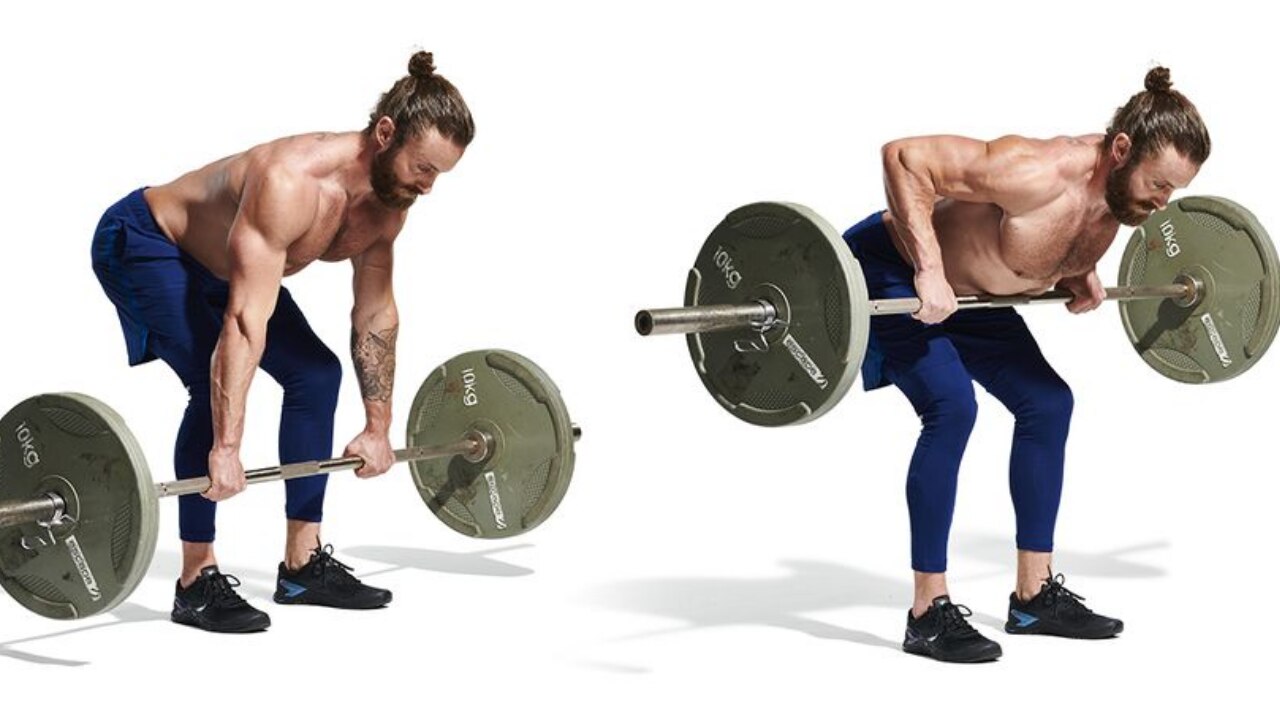
Pull-Ups and Chin-Ups:
Pull-ups and chin-ups are both fantastic bodyweight exercises that target your upper body strength. They may seem very similar at first glance, but there are some key differences:
Grip:
- Pull-up: Pronated grip – palms facing away from you.
- Chin-up: Supinated grip – palms facing towards you.
Muscle emphasis:
- Pull-up: Targets your back muscles more, particularly the latissimus dorsi (lats), and biceps.
- Chin-up: Targets your biceps and brachioradialis (forearm muscle) more, with some activation of the back muscles.
Benefits:
Both exercises offer similar benefits:
- Increased upper body strength
- Improved grip strength
- Enhanced core stability
- Better posture
Choosing the right exercise:
- Focus on back strength: Choose pull-ups.
- Focus on bicep strength: Choose chin-ups.
- Beginner: Chin-ups might be easier due to the supinated grip feeling more natural.
Modifications:
If you can’t do a full pull-up or chin-up yet, don’t worry! There are progressions you can try:
- Assisted pull-ups/chin-ups: Use a resistance band or pull-up assist machine to help you lift yourself up.
- Negatives: Jump up to the top position of the pull-up/chin-up and slowly lower yourself down with control.
- Incline rows: Use an incline bench or exercise ball to perform rows, which can help build the strength needed for pull-ups/chin-ups.
These bodyweight exercises pack a serious punch when it comes to back development. Whether you opt for pull-ups with an overhand grip or chin-ups with an underhand grip, you’ll be engaging your lats and upper back to promote width and thickness.
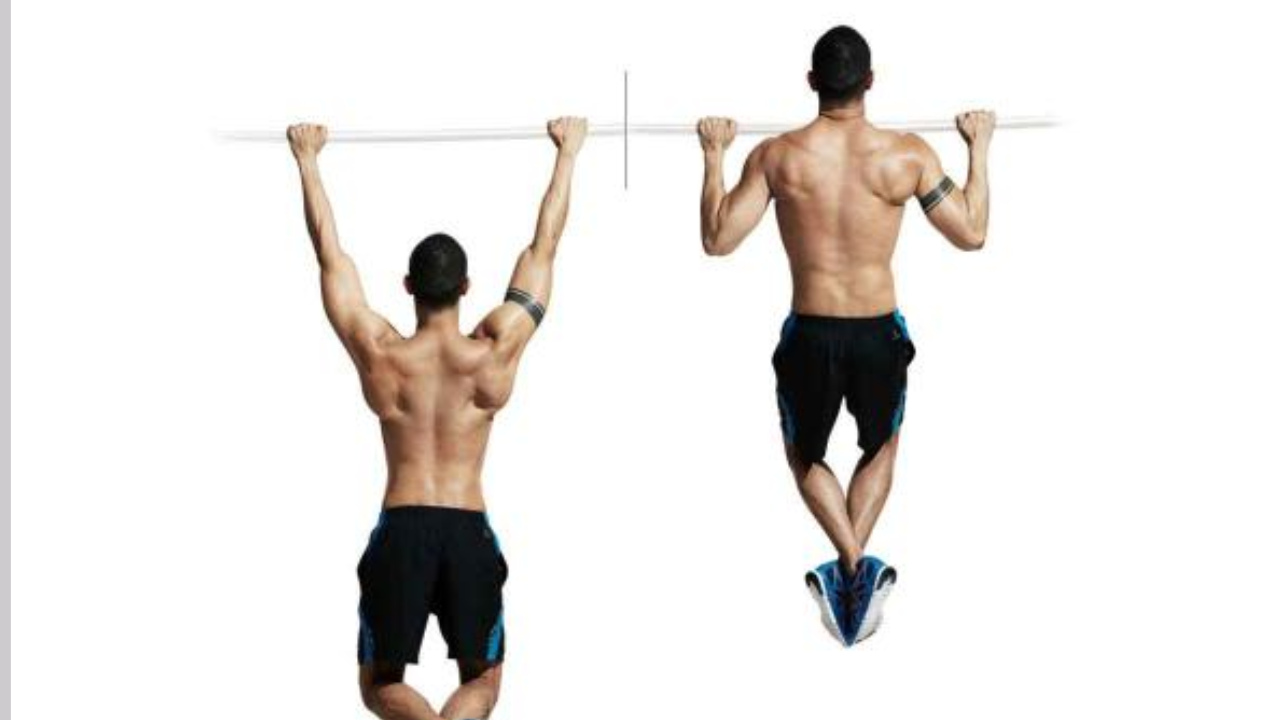
Barbell Shrugs:
The barbell shrug is a simple yet effective exercise to strengthen your upper back, particularly your traps. Here’s the scoop:
Muscles Targeted:
- Trapezius (traps) – main focus, responsible for shoulder blade movement and posture
Benefits:
- Stronger traps lead to better posture and shoulder stability.
- Improves overall upper body strength.
How-To:
- Stand with feet shoulder-width apart, hold a barbell with a shoulder-width grip (palms facing down).
- Keep your core engaged and back straight.
- Shrug your shoulders upwards, squeezing your traps at the top.
- Hold for a second, then slowly lower the weight.
- Focus on controlled movement, not momentum.
Tips:
- Choose a weight that allows 8-12 reps with good form.
- Don’t excessively shrug your shoulders – keep the movement in your upper back.
Stronger Back, Better You!
Add barbell shrugs to your workout routine for a stronger and more defined upper back.
Want to carve out those impressive traps? Look no further than barbell shrugs. This isolated movement targets the trapezius muscles, lending prominence to your upper back and enhancing shoulder stability.
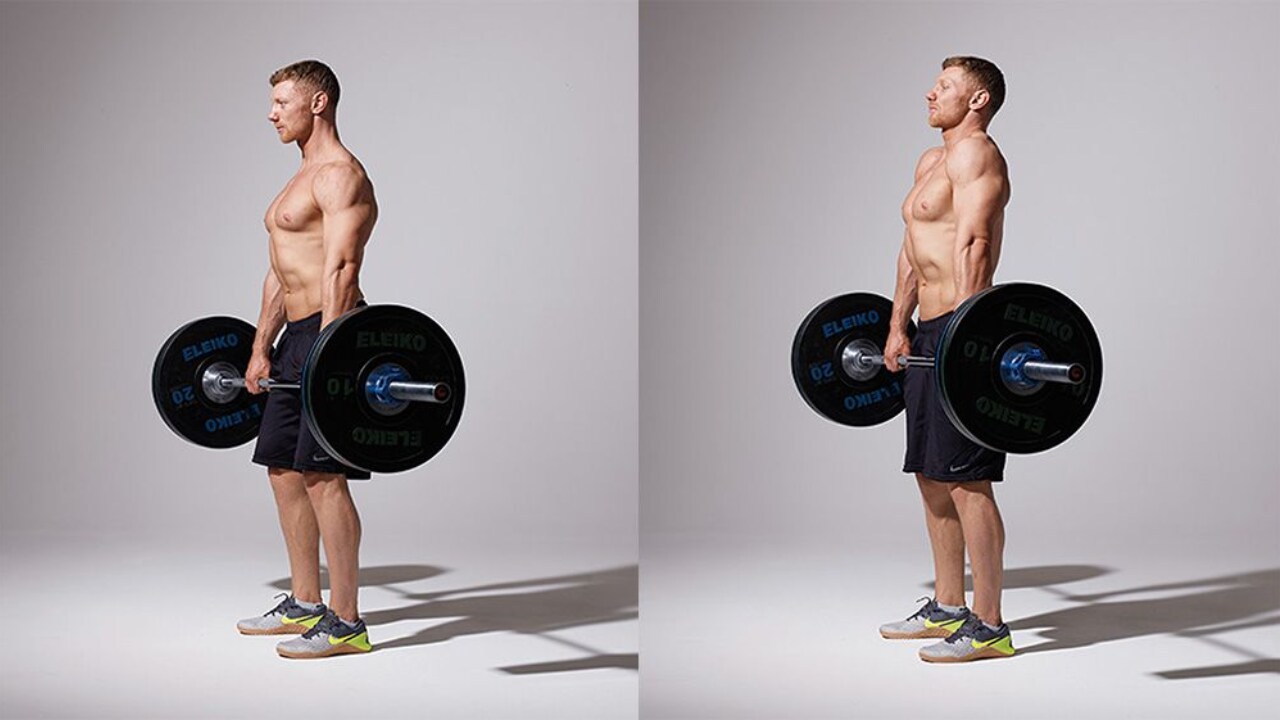
Single Arm Dumbbell Rows:
Single-arm dumbbell rows are a fantastic exercise to strengthen your back muscles and improve core stability. Here’s a quick rundown:
Muscles Targeted:
- Primarily hits your lats (latissimus dorsi), the large back muscles.
- Also engages your trapezius (upper back and neck), rhomboids (mid-back posture muscles), and rear deltoids (back of shoulders).
- Core muscles are isometrically challenged for stability.
Benefits:
- Builds back strength and definition.
- Improves posture and core stability.
- Can help identify and address strength imbalances between sides.
How-To:
- Find a bench or sturdy surface. Place one hand on the bench for support, other hand holds a dumbbell with a neutral grip (palm facing you).
- Hinge at your hips, keeping your back flat and core engaged, until your torso is at a 45-degree angle.
- Row the dumbbell up towards your side, squeezing your shoulder blade back and together.
- Lower the dumbbell back down with control.
Tips:
- Choose a challenging weight that allows good form for 8-12 reps.
- Focus on using your back muscles to lift, not your biceps.
- Keep your elbow close to your body throughout the movement.
- Breathe out as you row the weight up, inhale as you lower it.
Variations:
- Try an overhand grip (palm facing down) to emphasize lats more.
- Use a neutral grip for a more balanced workout.
Addressing muscle imbalances while promoting balanced strength, single arm dumbbell rows are a staple in any back-building arsenal. This unilateral movement engages the major muscle groups of the back, ensuring symmetrical development.
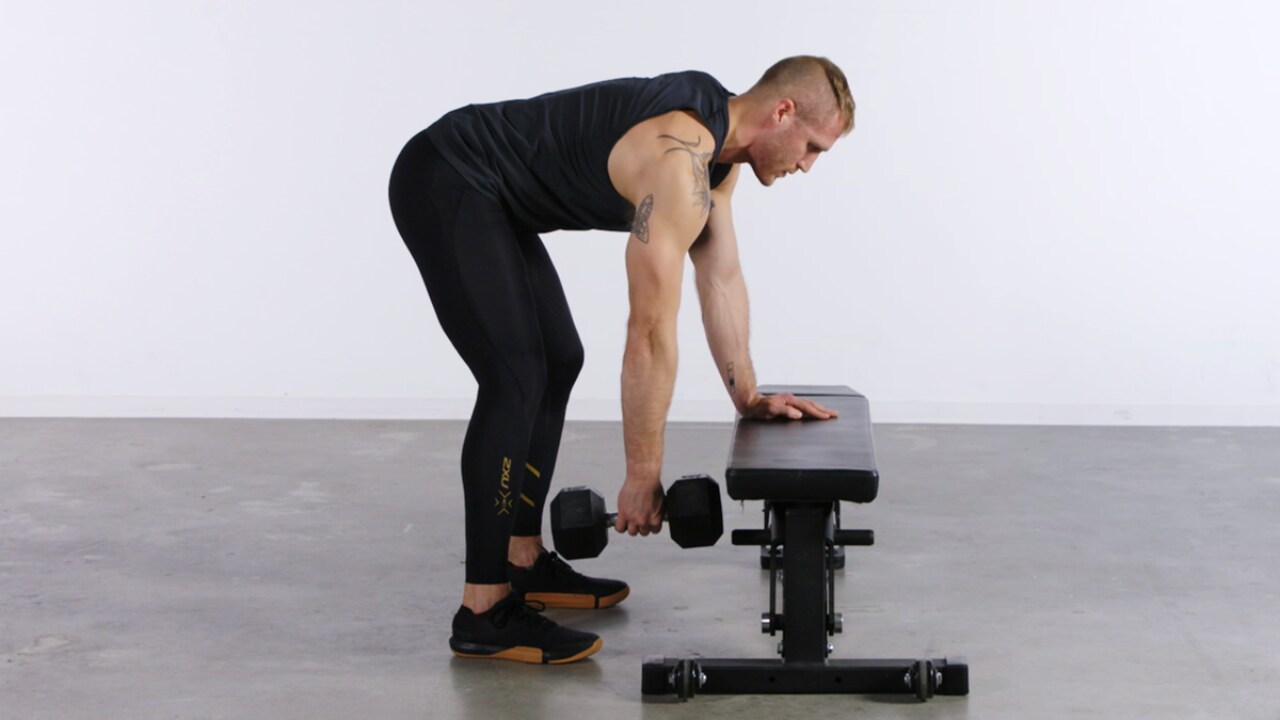
Barbell Deadlifts:
The barbell deadlift is a king among exercises, known for its ability to build strength and muscle mass in your posterior chain (backside). Here’s a breakdown:
Muscles Worked:
- Primary: Glutes, hamstrings (posterior chain), lower back
- Secondary: Core, shoulders, forearms (isometrically engaged for stability)
Benefits:
- Builds overall strength and muscle mass.
- Improves grip strength and core stability.
- Enhances athletic performance and functional movement.
How-To:
- Stand with feet shoulder-width apart, grip the barbell slightly wider than shoulder-width with palms facing down.
- Engage your core, hinge at your hips, push your hips back, and lower the bar down your shins (almost grazing them). Keep your back straight and chest up.
- Once the bar reaches your mid-shin or slightly below, reverse the movement by driving through your heels and hips to stand tall, squeezing your glutes at the top.
- Maintain proper form throughout – no rounding your back!
Tips:
- Start with a light weight to learn proper form before increasing weight.
- Focus on controlled movement, not momentum.
- Keep the bar close to your body throughout the lift.
- If you’re a beginner, consider using a deadlift platform to elevate the bar slightly.
Variations:
- Romanian Deadlift: Targets hamstrings more. Start with the bar at knee height and lower it down while keeping your back straight.
- Sumo Deadlift: Wider stance with toes pointed outward. May be easier on your lower back for some people.
The pinnacle of compound movements, barbell deadlifts recruit a vast array of muscles, making them indispensable for overall back development. Not only do they contribute to a powerful and defined back, but they also enhance core strength and stability.

Tips for Effective and Safe Back Training
As you embark on your journey to sculpt a powerful back, keep these essential tips in mind:
- Prioritize impeccable form to minimize the risk of injury.
- Embrace progressive overload to challenge your muscles and promote continuous growth.
- Experiment with different grips to target various areas of the back.
- Incorporate isolation exercises alongside compound movements for comprehensive muscle engagement.
- Listen to your body and adjust exercises as needed to prevent injury.
- Design well-rounded workouts that address all aspects of back development.
- Warm up adequately to prepare your muscles for the workload ahead.
- Stay consistent in your training to reap lasting results.
In Conclusion
Building a powerful back is not just about aesthetics; it’s about empowering yourself with strength, resilience, and functionality. By incorporating these five key exercises into your routine and adhering to sound training principles, you’ll unlock the full potential of your back muscles and embark on a transformative fitness journey.
So, what are you waiting for? Roll out your exercise mat, grab those dumbbells, and let’s sculpt a back that commands admiration and respect. Your journey to back greatness starts now!
Read More
Build Your Dream Body At Home: 10 Exercises for an Aesthetic Physique


